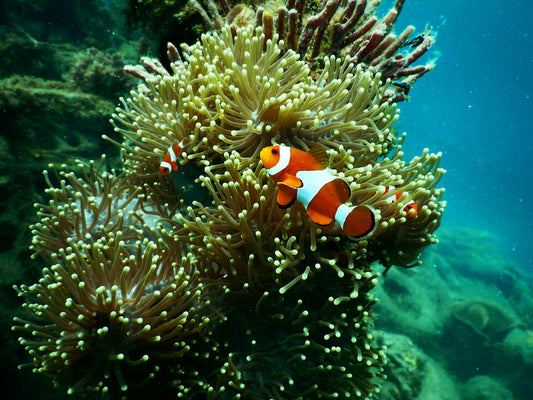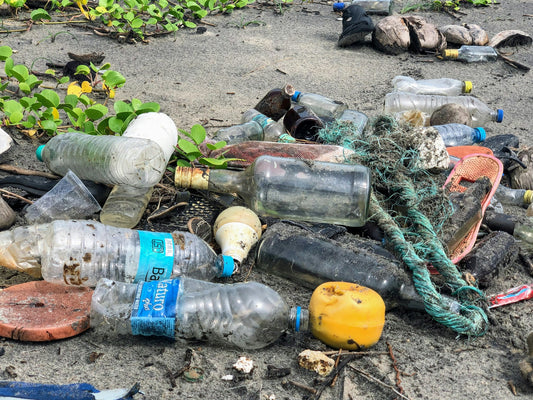Share
Did you know that your laundry comes at an incredible environmental cost? Energy-intensive washing and drying machines, extensive plastic waste, and toxic detergents affect the environment, your health, and your monthly energy bill.
Adopting an eco-friendly laundry routine not only benefits the environment but also promotes sustainable practices.
Considering these tips will make your laundry routine more environmentally friendly.
1. Wash Clothes Less Often
Sometimes the simplest tips are the most effective. Jeans, jackets, and pullovers can often be worn several times before requiring a wash.
Reducing your laundry frequency by wearing clothes multiple times before washing, can significantly reduce the energy use, climate change impact, and water consumption.
2. Wash with Cold Water
Washing clothes in cold water is as effective as using hot water for most loads.
Cold water saves energy, prevents color bleeding, and helps clothes last longer. It can remove many stains, including blood and sweat.
Most laundry detergents have a recommendation on their label or in their product descripton about washing temperature. A majority is equally effective with a reduced water temperature.
3. Ditch Plastic Jugs for Greener Alternatives
In North America alone, more than 30 billion loads of laundry are done every year, resulting in about 900 million laundry jugs being thrown away annually.
Unfortunately, only 30 percent of these plastic jugs are recycled, which means that more than 600 million of them end up in North American landfills each year. What a plastic mess!
Consider using low-impact alternatives such as eco-friendly laundry powders in compostable bags, solid laundry bars, or pre-measured laundry strips.
SWOP's laundry strips, are eco friendly, travel friendly, and super convenient.

Just toss in a pre-measured laundry strip with your laundry and walk away worry-free. SWOP's laundry strips:
- eliminate the toughest dirt with ease
- dissolve easily also in cold water
- are natural and hypoallergenic
- are plastic-free and come in compostable packaging
4. DIY Nature-Friendly Detergent
Other recipes use vinegar for whitening and softening clothes, and soap nuts can provide a powerful, natural alternative.
5. Wash Fuller Loads
Maximize the efficiency of your washing machine by filling it to the recommended capacity or using the load size selector option.
the math is simple: if you only wash half a load with the same water and energy consumpttion, you're wasting resources.
Larger loads also minimize the effort for doing laundry and saves you money.
As an additional advantage, it reduces microfiber shedding, benefiting the environment.
6. Use Fewer Cycles and Less Intensive Spins
Shorter cycles and lower temperatures are better for both your clothes and the environment.
A 30-minute cycle at 20 degrees Celsius (68 degrees Fahrenheit) can be just as effective as an 85-minute cycle at 40 degrees (104 degrees Fahrenheit).
Additionally, shorter and colder cycles reduce microfiber shedding.
7. Consider a Front-Loader
Front-loading washing machines tend to be more water and energy-efficient compared to top-loading machines.

They also have faster spin cycles, reducing drying time and energy consumption.
The next time you have to replace your washing machine, consider opting for a front loader.
8. Opt for Line-Drying or Heat-Pump Dryers
Harness the power of the sun and wind by line-drying your clothes whenever possible.

If air-drying is not feasible, consider investing in a heat-pump dryer, which is more energy-efficient than traditional dryers and reduces energy consumption.
In a heat pump dryer, the air is heated to remove moisture from clothes and then reused in a closed loop system.
Unlike traditional dryers that release warm, humid air outside through a vent, a heat pump dryer directs the air through an evaporator to extract moisture while retaining much of the heat for reuse.
9. Choose Wool Dryer Balls
Replace single-use dryer sheets with wool dryer balls.
They reduce static electricity, wrinkles, and drying time, while being biodegradable and chemical-free.
Add essential oils for a pleasant scent.
10. Consider a Microfiber Filter
Microfibers, tiny plastic particles shed during washing, pose a significant environmental threat.
They are often too small to be filtered by traditional water purification plants and end up in nature or even our drinking water as microplastic.
Installing a specialized microfiber filter can capture up to 90% of these particles and prevent their entry into oceans and soils.
11. Rethink Dry-Cleaning
Traditional dry-cleaning processes involve harmful chemicals.
Explore alternative methods such as hand-washing delicate fabrics with eco-friendly soap or using gentle cycle modes.
Special bags and liquid silicone or CO2 cleaning can be used for stubborn stains.A quick google search on "eco-friendly dry cleaner near me" can show you the alternatives.
Just be wary about potential greenwashing and do your research.
12. Choose Natural Clothing
Last but not least, your laundry can only be as green as your clothes.
If we start thinking about the planet from the moment we buy new clothes, we can reduce our impact significantly.
While we already mentioned above that microfiber clothes can shed in the wasching machine and dryer, natural clothes can limit the amount of microplastic and chemicals that emerge from your laundry.
The next time you go shopping, check the label for natural materials like cotton or linen.
Cleaner laundry cleaner planet
By adopting these eco-friendly laundry practices, you can significantly reduce the environmental impact of your laundry routine.
From washing clothes less frequently and using natural detergents to embracing cold water and efficient appliances, every small step contributes to a more sustainable future and less resource waste.








